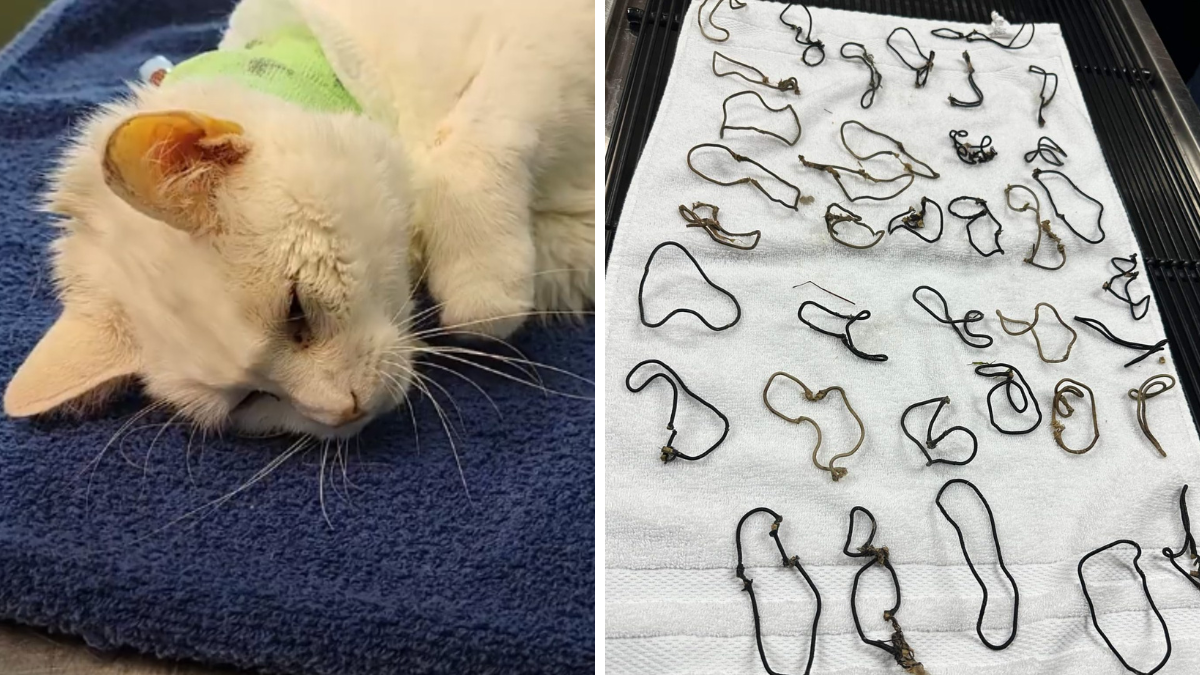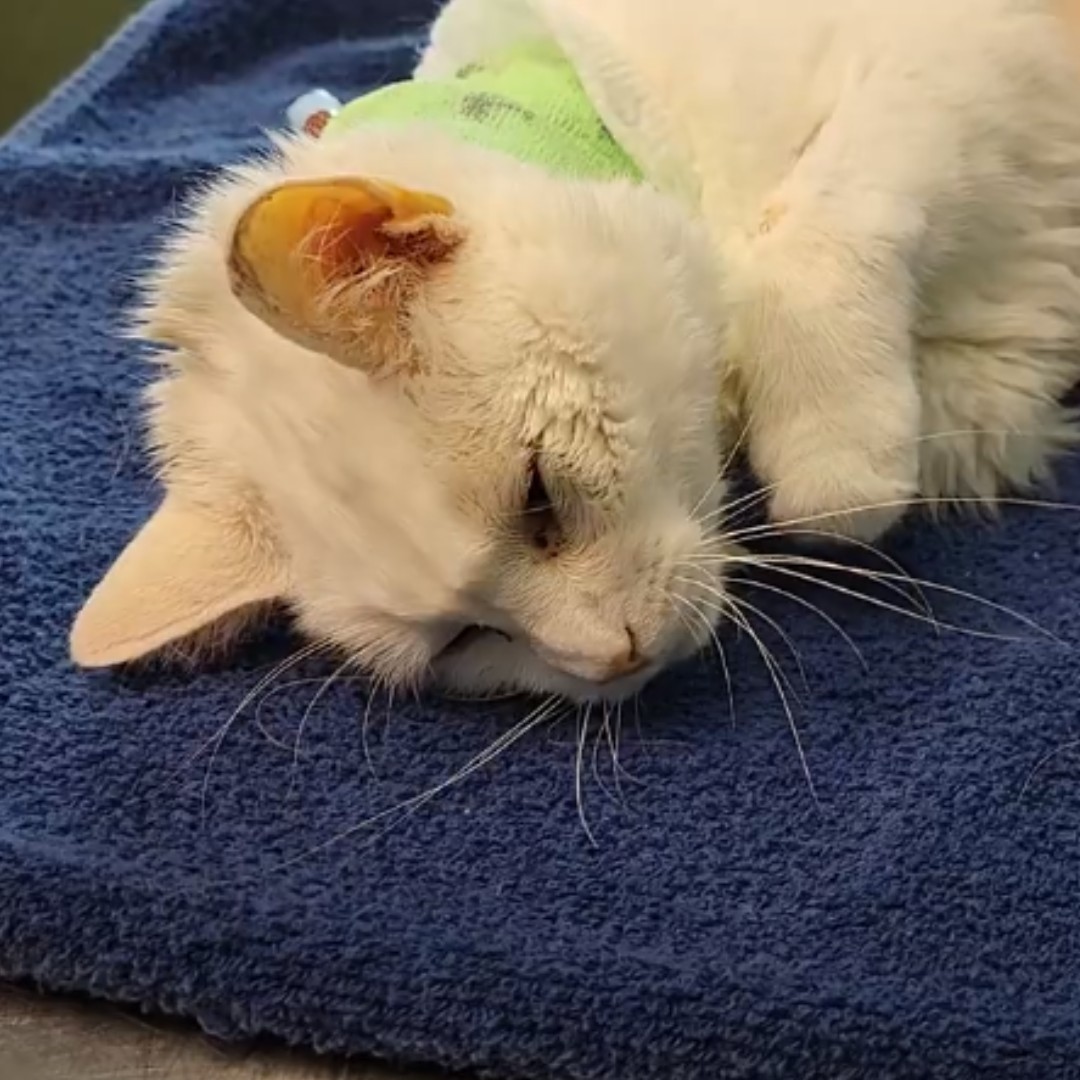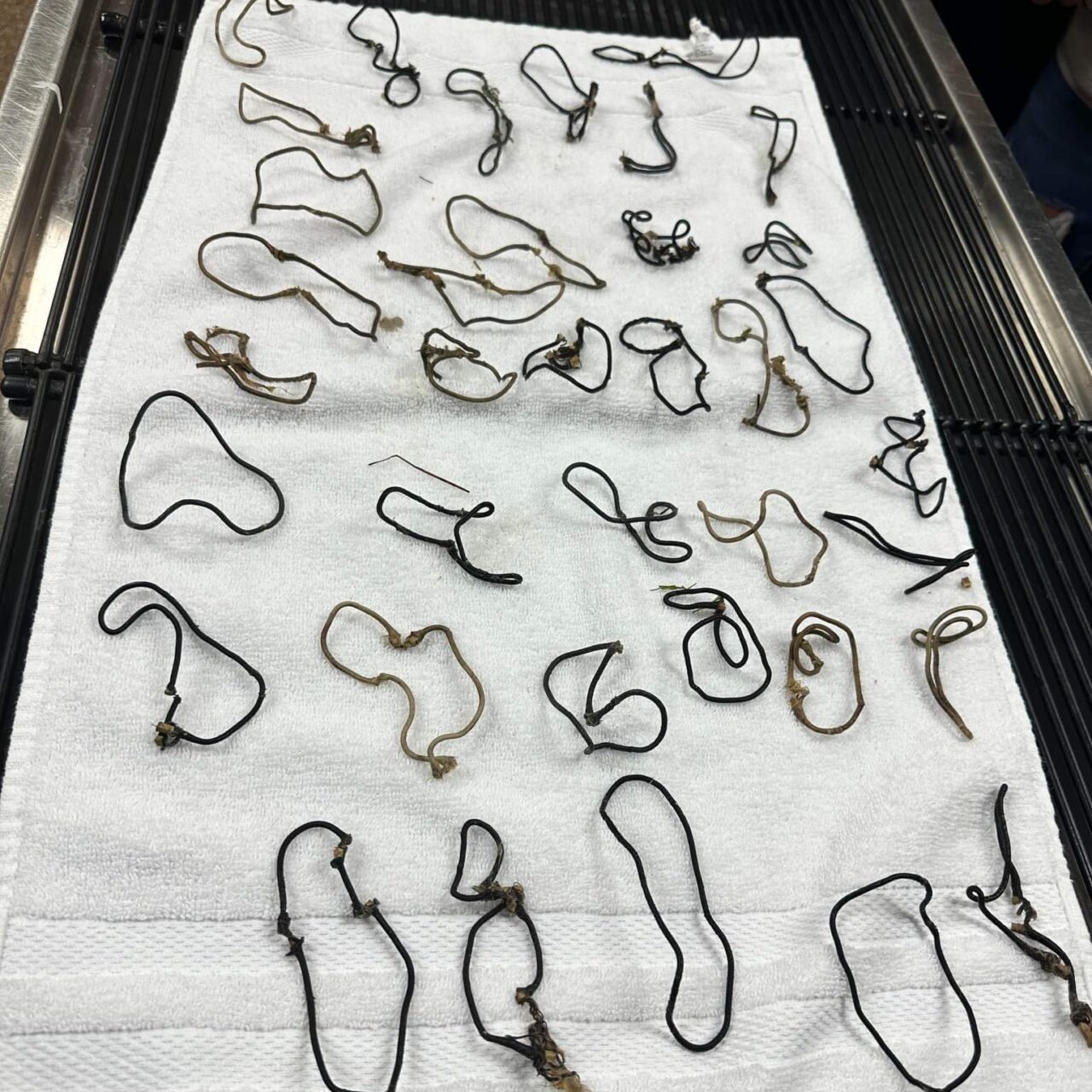📖 Table of Content:
The Charleston Animal Society in South Carolina is reeling from a heartbreaking tragedy after a cat named Juliet died despite emergency surgery to remove 38 hair ties from her stomach. Her story, which began with hope and resilience, has ended in sorrow, leaving shelter staff devastated and animal lovers everywhere reflecting on the hidden dangers of everyday household objects.
Juliet’s ordeal began when she was taken in by the shelter along with two other cats after their previous owners reportedly moved away and left them behind. At first, Juliet seemed to be settling in well to her new surroundings. But within weeks, staff noticed something was wrong.
She became lethargic, stopped eating, and showed little interest in her food or toys. Concern quickly grew as her condition worsened, and veterinarians decided to run further diagnostic tests to uncover the cause of her illness.
X-rays and exams revealed a shocking discovery: Juliet’s stomach was packed with dozens of hair ties, tightly wound into a large mass that her digestive system could not process. The sight left even seasoned veterinarians stunned.
Dr. Leigh Jamison, Associate Director of Veterinary Care at the shelter, admitted she had never seen anything like it in her career. The sheer number—38 hair ties—was almost unimaginable, yet each one had silently contributed to a life-threatening obstruction.
The veterinary team immediately scheduled an emergency surgery to save Juliet. During the procedure, they carefully removed the tangled collection of elastic bands and hair ties. Although it was a painstaking process, the surgery itself went well.
Veterinarians noted that, remarkably, the foreign objects had not yet damaged Juliet’s intestines, which gave her a fighting chance at recovery. Afterward, she was placed on a feeding tube, provided with medications, and monitored around the clock by caring staff who were desperate to see her survive.
Unfortunately, despite the successful removal of the obstruction, Juliet’s body had already begun to fail. She developed a severe liver condition known as hepatic lipidosis, caused by fat buildup in the liver after prolonged periods of not eating. Even with intensive medical care, her condition rapidly deteriorated, and the shelter shared the heartbreaking news that Juliet had passed away.
The Charleston Animal Society took to social media to express their sorrow, writing, “Even with the best care, not every animal makes it. We are heartbroken.”
For the staff, who had invested hope, love, and tireless effort into Juliet’s recovery, the loss was devastating. For the broader community, the story has served as a sobering reminder of just how dangerous seemingly harmless objects can be for pets.
A Cautionary Tale for Pet Owners Everywhere
Juliet’s tragic death has become more than just a loss for one shelter—it is a warning to cat owners everywhere. Cats are naturally curious creatures, often drawn to objects that dangle, bounce, or can be easily batted around with their paws. Hair ties, rubber bands, string, and even holiday tinsel can look like irresistible toys. But while they may seem fun for cats to chase, chew, or carry in their mouths, these items pose a hidden danger when ingested.
When swallowed, elastic items like hair ties can form dense, tangled masses in a cat’s stomach, blocking food from passing into the intestines. This prevents the animal from properly digesting or absorbing nutrients and can quickly lead to life-threatening complications. In Juliet’s case, the buildup of 38 hair ties was catastrophic, ultimately costing her life.
Veterinarians stress the importance of keeping small, elastic and stringy items out of reach. Something as simple as a hair tie left on a dresser or a rubber band dropped on the floor can become a deadly temptation for a cat. Owners are encouraged to store these items securely in drawers or containers and to remain mindful of what might be accessible to their pets.
Even toys designed for cats that use string or ribbon should be handled with care. While they can be enriching when used properly, they should only be offered under supervision. After playtime, such toys should be put away rather than left lying around, where a cat might chew them apart or attempt to swallow pieces.
It’s also important for pet owners to watch closely for warning signs that their cat may have ingested something dangerous. Loss of appetite, sudden lethargy, vomiting, or changes in behavior can all indicate a blockage. In such cases, immediate veterinary attention is essential. Early intervention can mean the difference between life and death.
The staff at the Charleston Animal Society hope that Juliet’s story will prevent other tragedies. They emphasize that her loss, while deeply painful, can serve as a powerful lesson to others about the dangers of common household objects. Juliet’s case may have ended in heartbreak, but her memory could save countless other cats whose owners now understand the risks.
For the shelter, Juliet’s passing remains a painful reminder of the fragility of life and the importance of vigilance in caring for animals. But beyond South Carolina, her story has spread across the country, touching the hearts of animal lovers everywhere.
Her tragedy underscores a simple but critical truth: what seems like a harmless object to us can be deadly to our pets.


